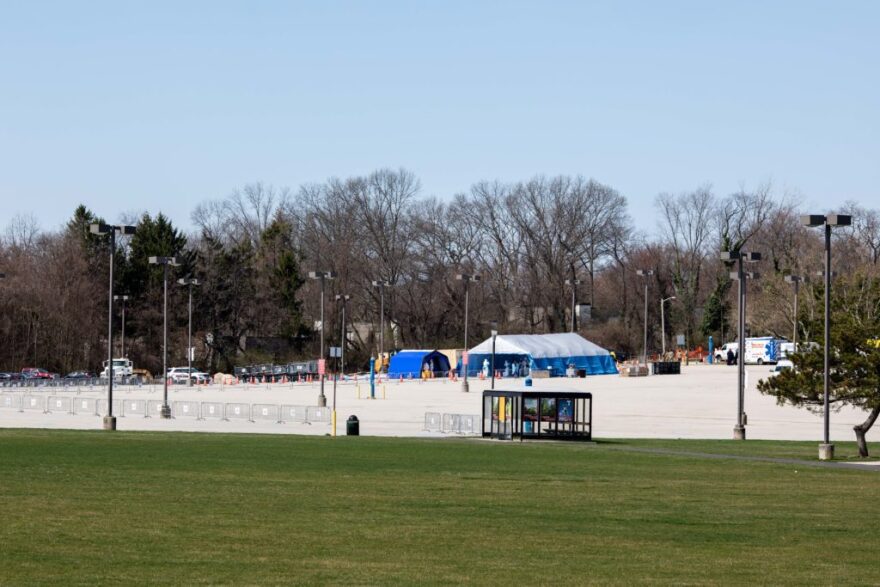One of the most powerful tools in fighting the coronavirus is a spreadsheet.
Every morning, Montgomery County contact tracer Neil Lader opens one up on his home computer, and delves into another day of chasing down the virus.
The document contains a list of names and data points — people to follow up with, people who he hasn’t been able to reach.
Around 9 a.m., he gets a list of new contacts — people who have just tested positive for COVID-19 and need to isolate. He adds them to the list.
Then, he works the phone. Over the course of each 30 to 90 minute call, Lader cycles through several types of questions, from the diagnostic…
“How are you feeling? Do you have a fever?”
To the logistical…
“Do you have one or two bathrooms in your dwelling?” “Well the bathroom you absolutely need to use, so after every use of the bathroom you need to wipe it down.”
To the relational…
“We probably need to get the names and contact details of your friends? Who you were with in the park?”
Montgomery County, the first place where the virus took off in the commonwealth, launched its contact tracing program on May 26, as the county prepared to allow some businesses to open in the “yellow” phase of recovery.

Since then, it’s been like “building the airplane while we’re taking off,” said Janet Panning, interim administrator for the Montgomery County Office of Public Health.
Across Pennsylvania, many counties reopened even as the state was still trying to get a patchwork system of contact tracing in place. If contact tracing could work anywhere, it’s here in Montgomery County: a wealthy suburb with its own health department, that has battled the outbreak from the get-go. But if the experience here is any indicator, contact tracing may be an uphill battle everywhere.
‘Hot on the trail’
If testing tells you where the virus is, contact tracing is what actually stops it, by limiting the chances the virus has to jump to new people. Under the right conditions, it can stem the spread of a disease, allowing life to return to a greater semblance of normal.
To do that, contact tracers must reach people who have been exposed to the virus and convince them to isolate before they have any symptoms or suspect they could be sick.
You know it’s working “if more and more cases are coming out from people you’ve put into quarantine,” said Josh Sharfstein, vice dean for public health practice and community engagement at Johns Hopkins University, which developed a widely used contact tracing course. “Then you’re basically hot on the trail of the virus. Eventually, the spread’s going to go way down.”
However, for contact tracing to be most effective, it takes both personal and political buy-in.
First, governments must recruit an army of contact tracers. Montgomery County has hired and trained 20 across who work out of four community organizations and has 10 additional public health nurses who can pitch in to help.
Whether that number is adequate depends on who you ask. A tool created by George Washington University to help states and counties estimate how many contact tracers they need puts the number for Montgomery County at 199, based on an average new daily case count of 33.
As is, Sharfstein said the ratio in Montgomery County is “probably going to challenge contact tracers, but it depends on the level of contacts people have had.”
In neighboring Philadelphia, the ratio is worse. The city currently has 100 contact tracers and 150 new cases per day.
How much governors and mayors restrict gatherings and businesses can have a direct impact on the workload. When businesses reopen, the likelihood goes up that people who are sick will have more close contacts and drive case counts higher.
In Montgomery County, most of the leads shared by people with positive cases point to people they live with, although there have been other points of contact related to outings and businesses, Panning said.
People with the virus have been reporting close contacts at restaurants, graduation parties, and beach getaways. In one instance, a sports team coach with the virus didn’t wear a mask during practices and games, sending 12 players and three coaches into quarantine, said County Commissioner Val Arkoosh during a press conference this week.
Read more from our partners, Keystone Crossroads.












